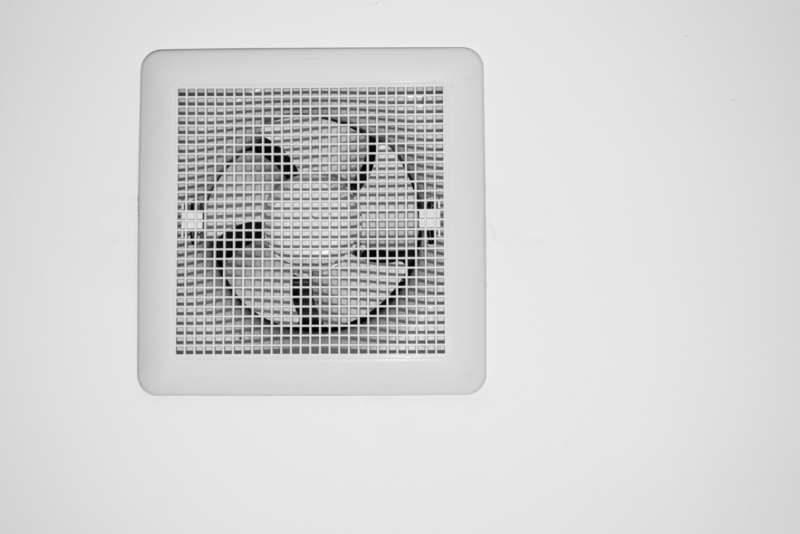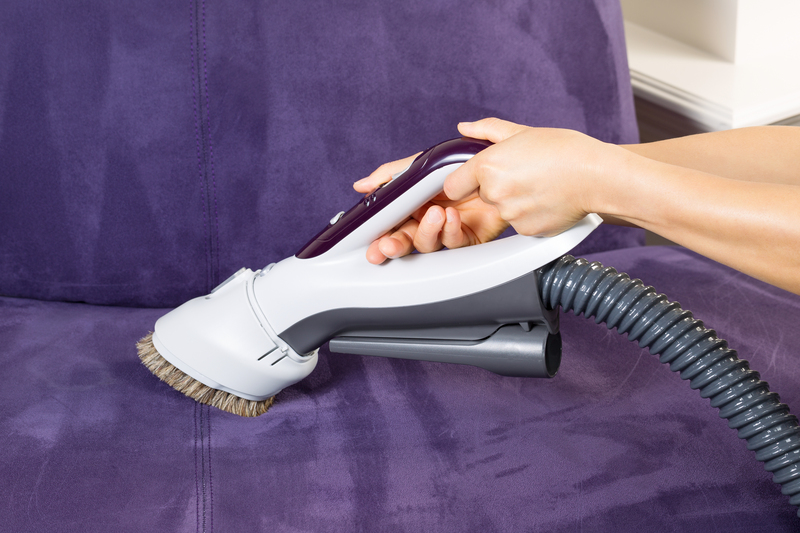From Greasy to Gleaming: Streamlined Enamel Tray Maintenance
Posted on 22/05/2025
From Greasy to Gleaming: Streamlined Enamel Tray Maintenance
Enamel trays are a beautiful and durable staple in many kitchens, laboratories, and art studios. Their iconic glossy finish adds a timeless elegance to any setting, while their resilience makes them favorites for repeated use. However, keeping enamel trays clean and in top condition requires a thoughtful approach. Without proper care, these trays can become dingy, greasy, or even damaged. In this guide, we reveal expert enamel tray cleaning and maintenance strategies to keep your trays in pristine, gleaming condition.
Understanding the Beauty and Value of Enamel Trays
Before diving into maintenance, let's highlight why enamel trays are such a valuable addition to homes, research settings, and artistic environments:
- Durability: Finished with a glassy, fused coating, enamel trays resist scratches, stains, and everyday wear-and-tear.
- Non-porous surface: Enamel's smooth finish makes it naturally resistant to bacteria and odors.
- Aesthetic appeal: Their classic shine complements both vintage and modern aesthetics.
- Versatility: Enamel trays are heat resistant, making them suitable for serving, baking, or laboratory work.
However, repeated exposure to grease, acidic foods, or harsh chemicals may tarnish that iconic gleam. To maximize their lifespan, implementing a regular enamel tray maintenance routine is essential.

Why Streamlined Enamel Tray Maintenance Matters
Proper enamel tray care is not only about aesthetics--it's crucial for health and preservation. Here's why:
- Hygiene: Residual grease or food particles can harbor bacteria if not properly cleaned.
- Longevity: Regular, gentle cleaning ceremonies prevent chips, discoloration, or corrosion.
- Ease of use: Gleaming trays are easier to use and more pleasant to present at the table or lab bench.
- Cost-effectiveness: Well-maintained trays last longer, so you save money replacing them less frequently.
Ready to go from greasy to gleaming? Let's explore the best techniques and tricks for enamel tray cleaning and upkeep.
Streamlined Steps for Cleaning Enamel Trays
1. Assess the State of Your Enamel Tray
Before rushing into washing, take a minute to inspect your tray. Note the presence of:
- Stubborn, baked-on grease or stains
- Surface scratches or chips in the enamel coating
- Discoloration, rust spots, or dullness
This step will help you determine which enamel baking tray cleaning methods are most appropriate.
2. Prepare Your Cleaning Tools
Gather the following gentle cleaning tools and agents:
- Soft dish sponge or microfiber cloth
- Mild dish soap (avoid harsh chemicals or abrasives)
- Baking soda (for stubborn stains)
- White vinegar (optional, for deodorizing and brightening)
- Wooden or silicone spatula (never use metal scrapers!)
- Soft-bristled brush (for crevices)
Tip: Avoid using steel wool, scouring pads, or harsh caustics, as these can scratch or strip the enamel coating.
3. The Gentle Wash: Daily Enamel Tray Cleaning
For routine cleaning after serving or baking, follow these streamlined steps:
- Let the tray cool. Sudden temperature changes can crack the enamel.
- Rinse with warm water. Remove loose debris and soften leftover residues.
- Apply dish soap to a soft sponge and gently scrub the tray surface. Pay attention to greasy areas or corners.
- Rinse thoroughly to remove all soap--residues can dull the finish over time.
- Dry completely with a soft, lint-free cloth to prevent hard water spots and rust on any exposed metal edges.
Consistency is key--treat your trays to this gentle ritual after every use to maintain their shine.
4. Lifting Stubborn Grease and Stains
Even with regular cleaning, greasy accumulations or stains may occur. Here's how to deep-clean your enamel trays:
- Create a baking soda paste: Mix a few spoonfuls of baking soda with a splash of water to form a paste. Spread over greasy or stained areas.
- Let it sit: Allow the paste to rest for 30 minutes to several hours, depending on the severity of the stains.
- Gently scrub: Using a soft sponge, work the paste into the stains in a circular motion.
- Rinse thoroughly and check - repeat if necessary.
For extra-tough grease, fill the tray with hot water, add a spoonful of baking soda and a splash of vinegar, and let it soak for a few hours before scrubbing and rinsing. This non-abrasive approach preserves the enamel surface while lifting grime.
5. Deodorizing and Brightening
Enamel serving trays may retain smells after holding pungent foods. To deodorize and restore brightness:
- Sprinkle baking soda evenly over the tray, then spray or sprinkle lightly with white vinegar.
- Let the fizzing action work for 10-15 minutes.
- Clean as usual, rinse, and dry.
This simple hack both freshens and reignites the original gleam of your enameled tray.
6. Removing Rust and Addressing Chips
While enamel trays are resistant to corrosion, chips that expose the underlying metal can allow rust to form. Smooth, intact enamel is naturally rustproof--but if you spot any:
- Treat small rust spots right away with a paste of baking soda and water. Gently scrub with a soft brush and rinse.
- If chips expose metal, consider a food-safe enamel repair paint or kit to patch small areas and prevent expansion.
- Never use rusty or chipped enamelware for food preparation until repaired.
7. Polishing for That Gleaming Finish
If your enamel tray has lost some of its sparkle, restore its shine by:
- Buffing lightly with a soft, dry cloth after each wash
- Using a tiny drop of olive oil (wipe away excess) to add shine
- Avoiding abrasive commercial cleaners or waxes, which can damage the finish
Pro Tips for Prolonging Enamel Tray Lifespan
Avoiding Common Mistakes
- Don't use metal utensils or knives on enamel trays, as they can chip the surface.
- Avoid rapid temperature changes: Let hot trays cool before washing with cold water.
- Never soak for extended periods: Prolonged exposure to water can undermine the coating at seams or chips.
- Do not stack enameled trays without protectors in between--friction may scratch the glaze.
- Avoid harsh chemicals, bleach, or ammonia for cleaning.
Proper Storage Matters
- Keep trays completely dry before storing to prevent rust formation.
- Use felt, paper towels, or silicone mats between stacked trays to prevent scuffs or chips.
- Store in a cool, dry area, away from direct sunlight or heat sources.
When to Seek Professional Help
- Significant chipping or cracking: Large, deep chips may require professional enamel repair or replacing the tray.
- Persistent stains or discoloration: If home remedies don't restore your tray, specialty enamel cleaners (follow manufacturer's directions) may be appropriate.
Special Considerations for Laboratory and Artistic Enamel Trays
Enamel lab trays and art enamel palettes require even stricter cleaning protocols, as residues can impact experiments or art materials. In these environments, use only approved, non-reactive cleaning agents and follow institutional safety guidelines. Always ensure complete rinsing to prevent cross-contamination.

Frequently Asked Questions About Enamel Tray Maintenance
Q: Can I clean enamel trays in the dishwasher?
A: Although some modern enamel trays are labeled dishwasher-safe, frequent dishwasher usage can lead to dulling or chipping over time. For best results and longevity, hand-washing is recommended.
Q: What if my enamel tray is stained with burnt-on food?
A: Soak the tray with hot water and sprinkle with baking soda. After an hour, gently scrape residue with a wooden or silicone spatula, never metal. Repeat as needed for tough stains.
Q: Is it safe to use vinegar or lemon juice on enamel trays?
A: Yes, in moderation. Mild acids can help remove stains and deodorize but always rinse thoroughly after use, and avoid prolonged soaking.
Q: My enameled baking tray has a dull finish. How can I restore its shine?
A: Wash and dry thoroughly, then buff with a soft cloth. Occasionally, a dab of olive oil can enhance shine--wipe away any excess to prevent stickiness.
Q: How can I prevent chips on the edges?
A: Handle trays with care, avoid banging them against hard surfaces, and always use gentle cleaning tools. Store with cushioning between trays.
Conclusion: Your Path to Gleaming Enamel Trays
With their vintage charm and practical advantages, enamel trays deserve the best care you can give. From greasy residues to gleaming finishes, adopting a streamlined enamel tray maintenance routine pays dividends in beauty, hygiene, and longevity. Remember:
- Practice gentle, regular cleaning
- Address stains or chips promptly
- Store and handle with care
- Rely on non-abrasive tools and mild cleansers
Whether you cherish a classic enamel baking tray, a colorful serving piece, or a laboratory essential, these tips ensure your trays always look (and perform) their best. Make "greasy to gleaming" your new mantra for enamel tray TLC!
Related Articles
- The Ultimate Guide to Caring for Kitchen Enamelware
- Safe Cleaning Methods for Vintage Enamel Dishes
- Restoring Enamelware: Repair and Renovation Tips
Ready to transform your enamel trays from greasy to gleaming? Begin your maintenance journey today and keep your trays shining for years to come!





